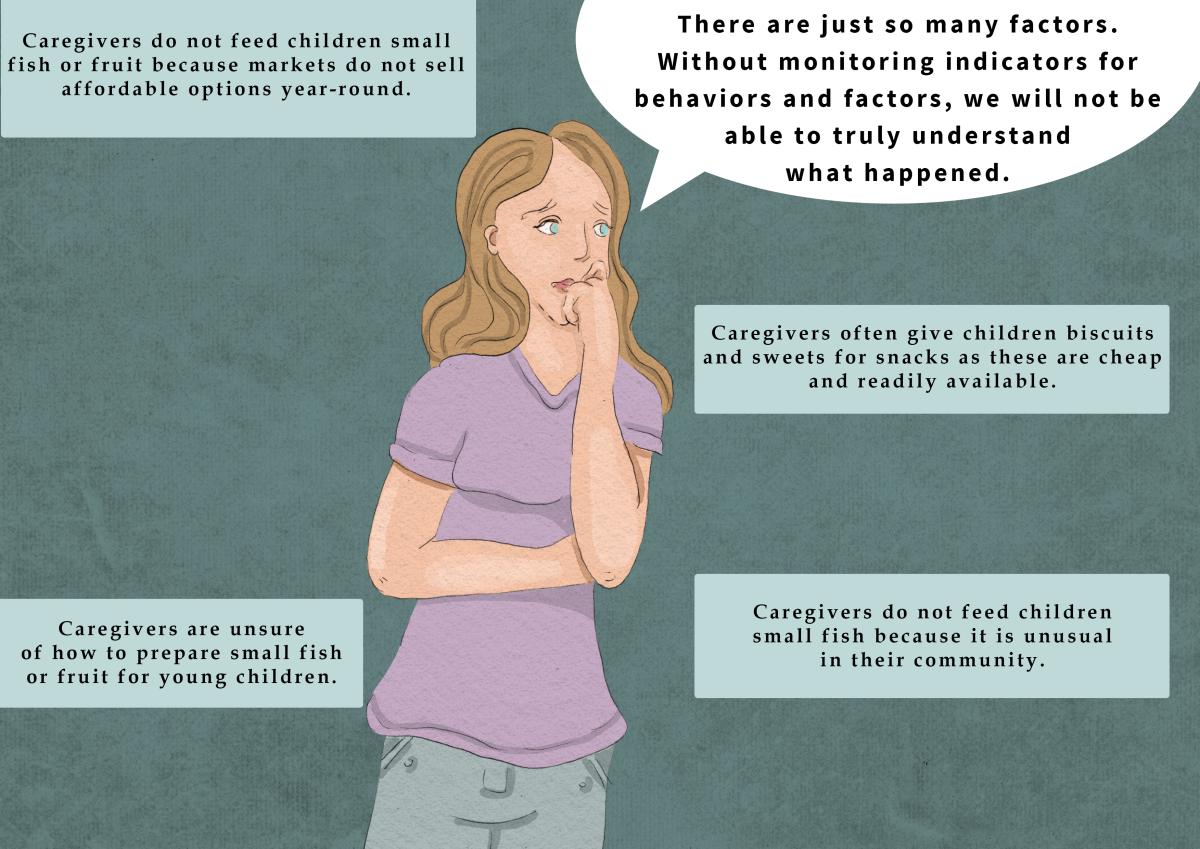To make the SBC strategy a reality and bring the planned activities to communities, a work plan, detailed activity plans, and a MEL plan are useful to ensure that all elements are in place and well-coordinated.
The MEL plan guides how to track progress and use data to make adjustments as needed. It also makes sure you have the right systems in place early for ultimately measuring the success of your program.
4.1 Prepare detailed plans for implementation based on the SBC strategy.
Develop an implementation plan for each of the activities identified in the SBC strategy with key technical teams, partners, and government stakeholders.
4.2 Develop linked activity plans.
Develop plans to provide additional details beyond the SBC strategy for any strategic approach or activity that needs extra attention across program teams such as policy change or enforcement, food value chain strengthening, service improvement, and communication.
SBC communication can be a distinct activity and supports the totality of the activities in the strategy to keep implementers working on ensuring adequate food, services, and practices together.
Messaging should address a factor that prevents or supports the behavior, and motivate action by appealing to emotions. For example, the Growth through Nutrition project in Ethiopia uses the creative concept of a sunflower to show key times for child nutrition. The concept is used throughout songs, stories, dramas, games, print materials and videos by role models.
4.3 Plan for monitoring.
MEL and technical teams should work together to refine and incorporate the indicators for the priority behaviors and critical factors into the existing MEL plan or develop a new one, if needed. Use worksheet 4.1 to set indicators, track progress, and adapt as needed. The Monitoring SBC tool can also help.
4.3.1 Determine key indicators.
These indicators enable program leaders to check progress toward the end goal: uptake of priority behaviors. Globally recognized indicators exist for most complementary feeding practices or topics. Set up indicators to track key factors too.
4.3.2 Identify the frequency and method for collecting data on each indicator.
For each indicator consider what method you will use to collect data and how often you will track progress on the indicator so you can determine where and when to make adjustments.
4.3.3 Establish a plan for analyzing monitoring data, sharing with communities, and continual learning.
Analysis should be done regularly (monthly or quarterly) with implementers, stakeholders, and communities to inform learning and improvement. Look at trends for individual behavior and factor indicators and factor-level measures alongside the behavior indicators.
4.4 Plan for evaluation.
Planning for evaluation early is a best practice. Determine the scope and design of the evaluation, draft key evaluation questions, determine which monitoring data can provide useful context or help answer evaluation questions, select evaluation methods, establish project baselines, and set targets for key indicators using the guide for evaluators.
4.4.1 Determine the scope of the evaluation.
Evaluations may be focused on performance, process, or outcome; impact; cost-effectiveness; or sustainability.
After you set up your evaluation questions, revisit your monitoring indicators to see if any indicators need to be added based on the scope and type of evaluation you select. Then, determine the scope of the effort by considering the following questions:
- How will the findings be used?
- Which questions need to be answered to measure activity success?
- What resources (financial and human) and how much time are available for the evaluation?
4.4.2 Determine the most appropriate methodologies for evaluating success.
Evaluations are usually mixed-methods studies and include some combination of different data collection techniques such as semi-structured observations, key informant interviews, household surveys, and reviews of existing secondary data. Evaluation is an opportunity to take a different snapshot of the progress than what is captured by your monitoring indicators by engaging different groups or using different data collection methods.







